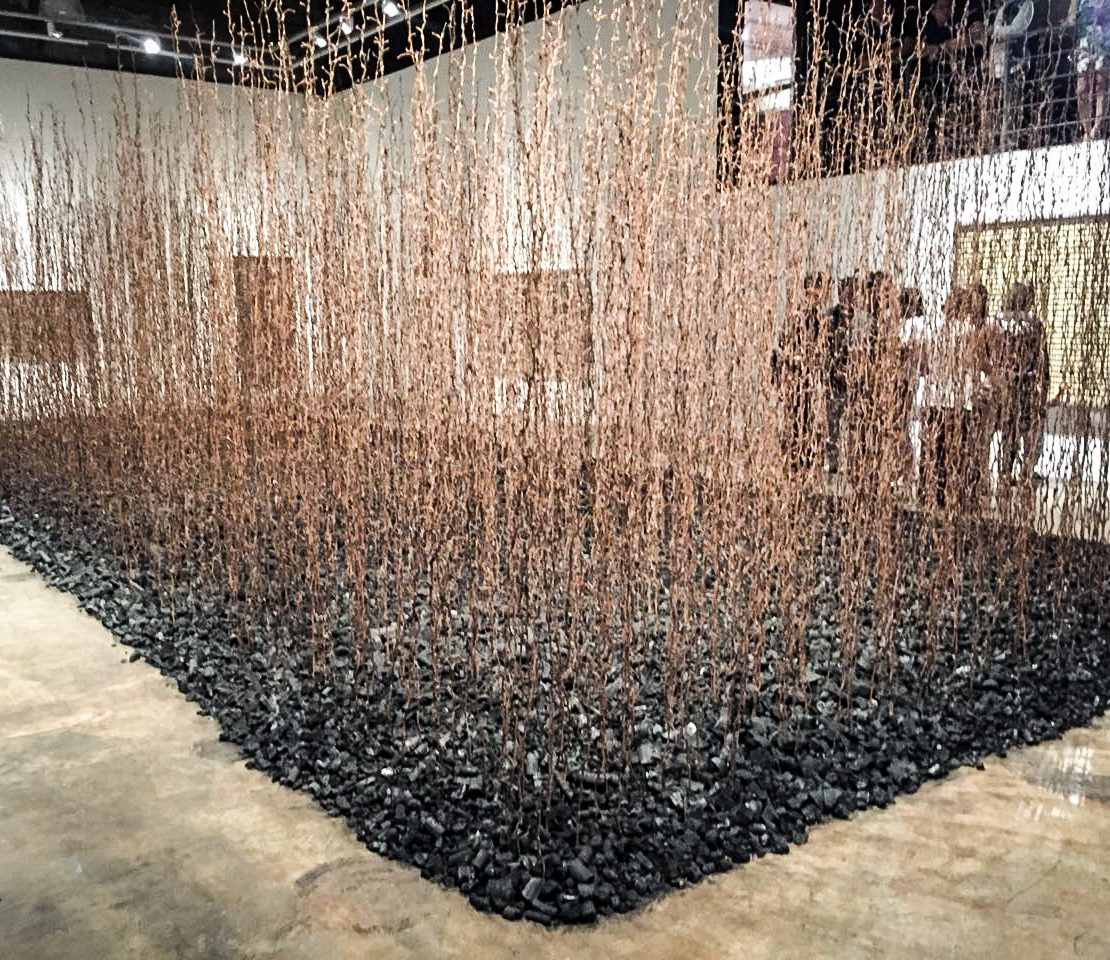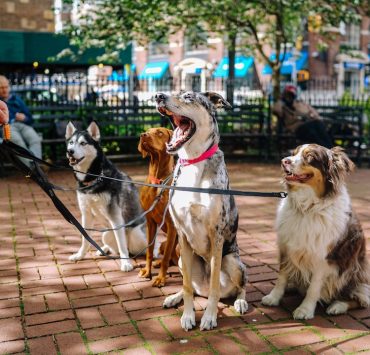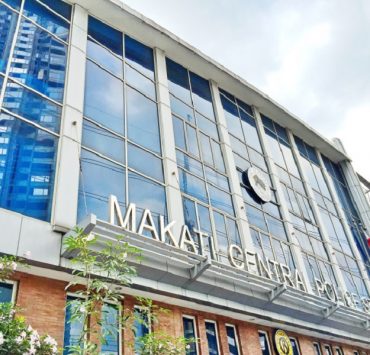In Oca Villamiel’s exhibit “Back to Nature,” currently showing at Finale Art File, a massive installation commands the space. The work called “Black Forest” consists of nails harvested from demolished old houses welded together to mimic the appearance of saplings. The black soil is actually made up of charcoal, sourced from Villamiel’s province in Atimonan, Quezon.
The installation was inspired by denuded forests in the Philippines, decimated by loggers. Once vegetation returns, according to Villamiel, the saplings are razed by locals to produce charcoal, in order to sell them for food.
This cycle continues until today. Where once forested areas, rich in wildlife flourished in pre-colonial times, industrialization and big business have ultimately destroyed what was left of these eco-systems.
“Rebuilt and rising from such ruined sites, Villamiel’s forest is a field of grim signs: reminders of what remains after cyclical histories of extraction, exploitation, and deprivation,” writes Lisa Ito in the show notes.

The entire exhibit consists of the artist’s ruminations on nature and the environment, expressed through a metaphor of symbiosis between bird and tree.
“The relationship between friends,” he says as an example, may fray and disintigrate, “but the bird and tree require the other to survive.”
Using the framework of avian specie and flora, the exhibit features delicately wrought pieces, like neatly-lined modern apothecary bottles filled, in the case of one piece entitled “Festival,” with feathers, washi paper, and Japanese fabric.
According to Ito, “The individual works are all inspired from scenes, memories, and impressions from his rural hometown in Quezon province: waking up at the break of dawn to find a forest covered in haze, looking up at the majestic length and ridges of an old tree trunk, encountering the colors and heat of a summer festival.”

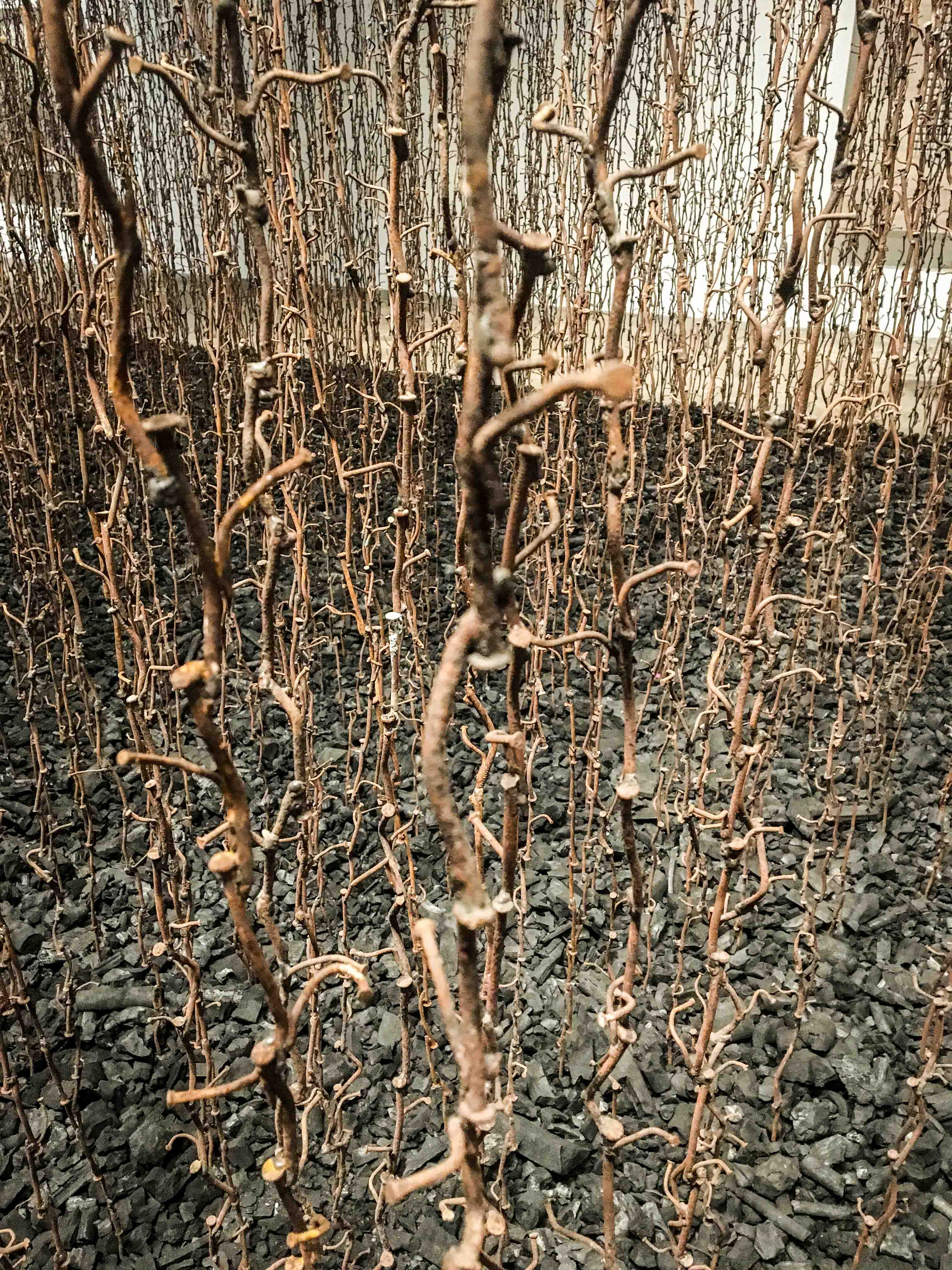
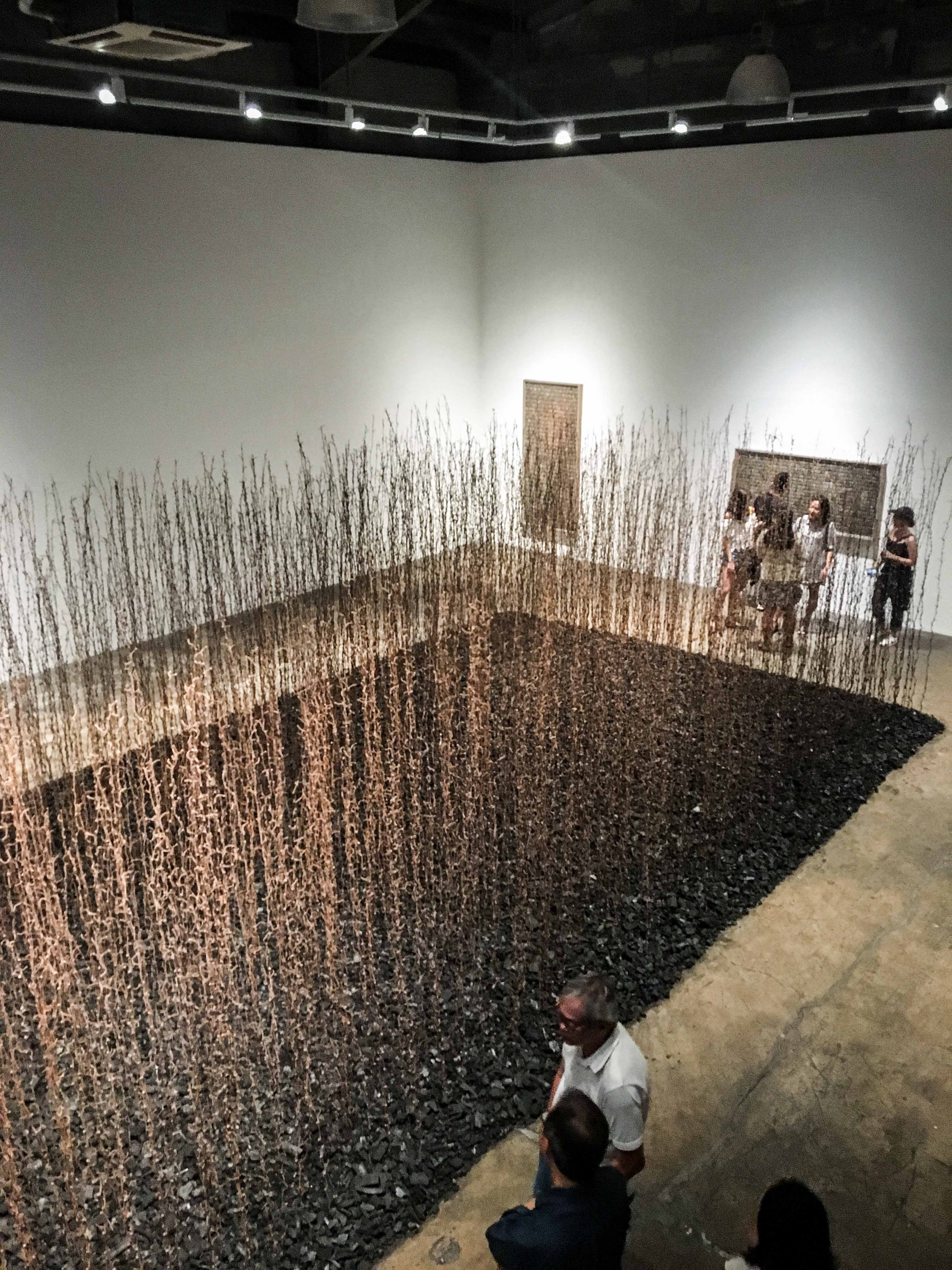
One piece simply titled “Trunk,” constructed in the same format, consists entirely of peacock and chicken feathers in hues ranging from fawn to umber. Villamiel, who raises chickens in his backyard, found himself crafting the piece after an old Caimito tree in his backyard collapsed from a typhoon.
Some may find the show bleak, a dispiriting reflection on the nature of the world we live in today and the lack of empathy we’ve shown for the environment. The show opens with a dead crow—an actual dead bird—gifted by a farmer from Atimonan. The crow, entombed in a glass-topped box nestled in a bed of frog bones (“The farmers in my province eat frogs,” he says), appears to be a morbid foreshadowing of our future: desolate, dusty spaces in what used to be living forests. Crows, after all, are carrion birds considered harbingers of death. It’s a familiar trope: When shit’s about to hit the fan in literature, Shakespeare would pack the scenery with crows and ravens.

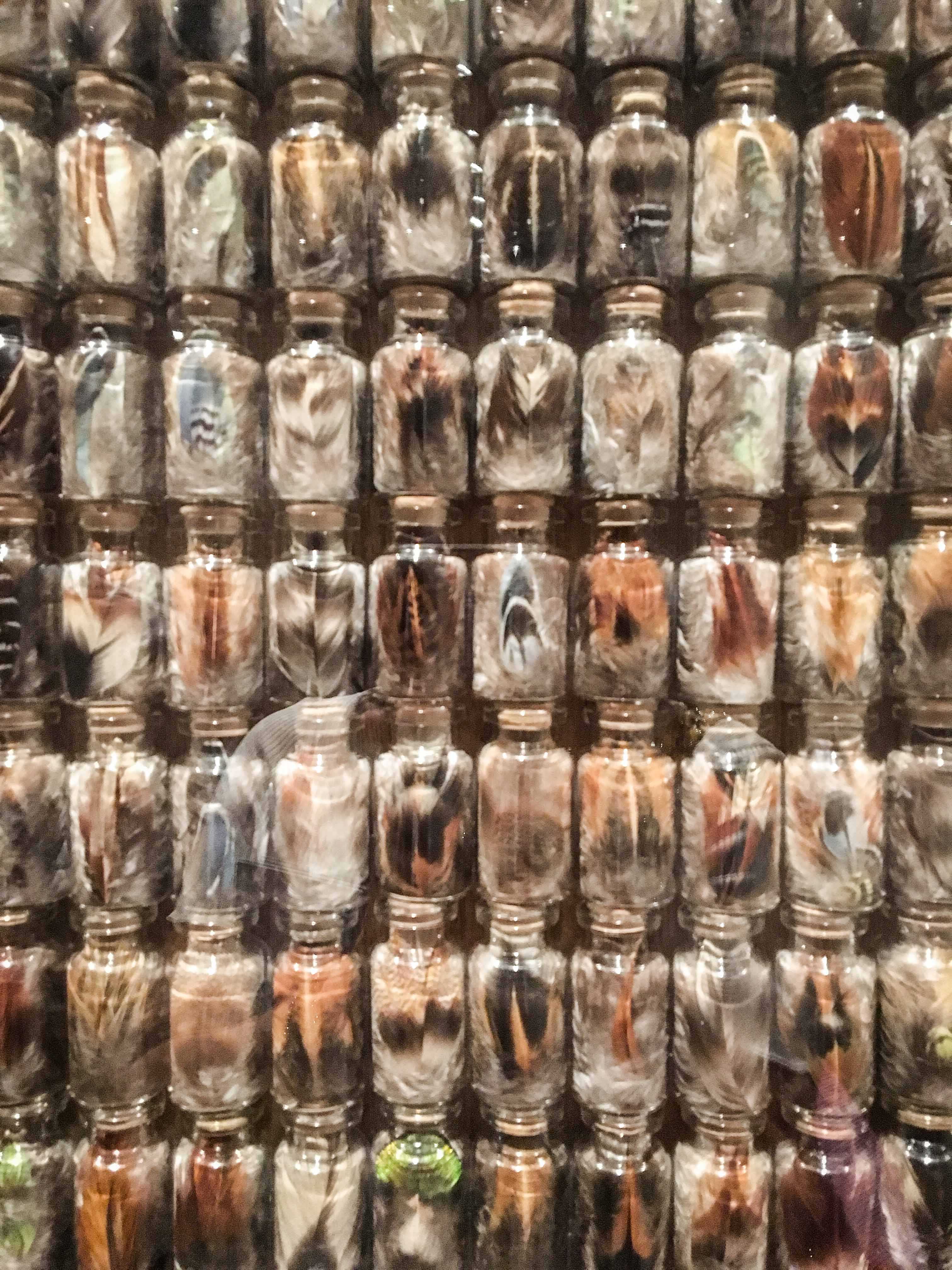

But modern mystics, including a manghuhula I conscripted once, refer to crows as creatures with life-giving magic. Meanwhile, Native American myths attribute wisdom and divination to the bird, considering it a symbol of rebirth and change.
Perhaps Villamiel’s treatise is not a morbid prophecy but a matter of fact discomfiting look at how we interact with the world.
On a mixed-media collage consisting of feathers, where birds from books and magazines carefully torn out, Villamiel says he was inspired by Emily Dickinson’s poem “Hope” Is The Thing With Feathers. The poem conflates hope with birds and appears to be Villamiel’s thesis here.

The artist, who used to breed birds like cockatiels and African lovebirds, is an environmentalist. “Whenever I go to another country, like Japan,” he says, “I go to the most remote part of their mountain regions, just to admire their forests. Their respect of nature.”
“You love your body?” he asks me.
“I should hope so,” I say.
“We must respect the physical body, as well as the spiritual nature,” he says. Both physicalities, our bodies and the spaces surrounding them, are inextricably linked. “When we understand that,” he says, “magaan ang kalooban.”
“Back to Nature” runs until July 30 at Finale Art File Gallery, La Fuerza, Chino Roces Ave., Makati City.
Get more stories like this by subscribing to our weekly newsletter here.
PHOTOGRAPHY BEA LEDESMA AND NIMU MUALLAM


